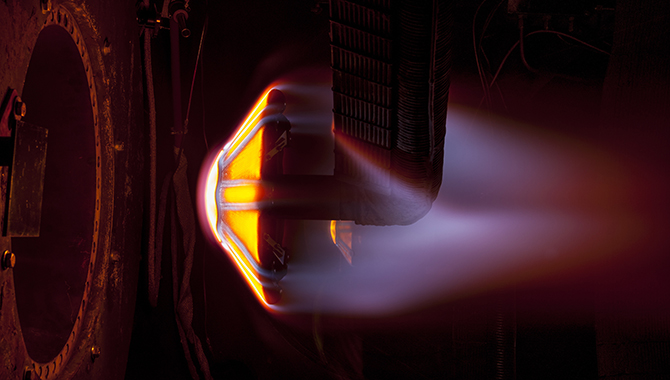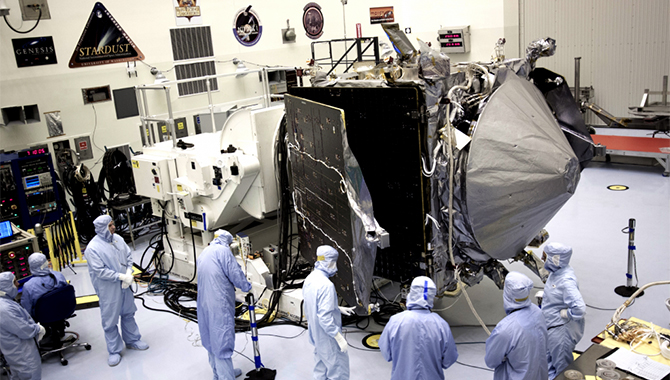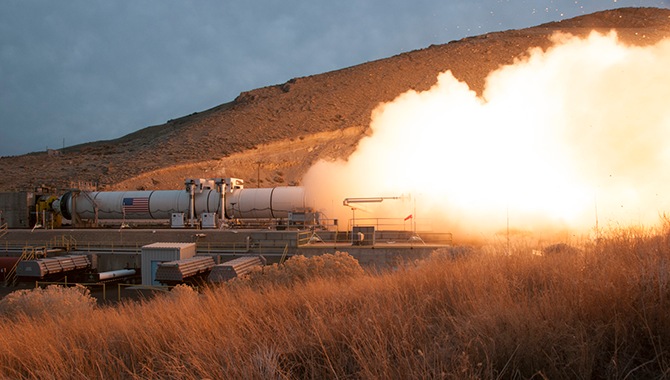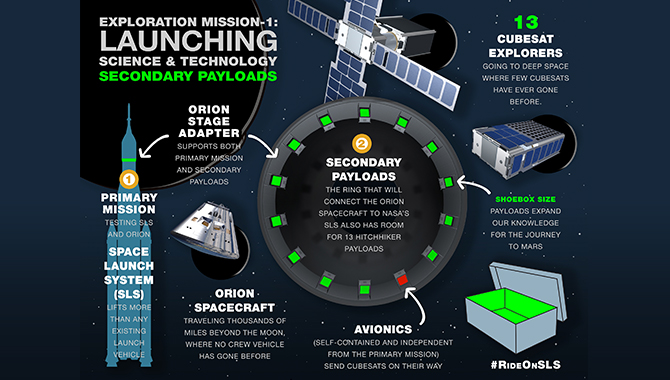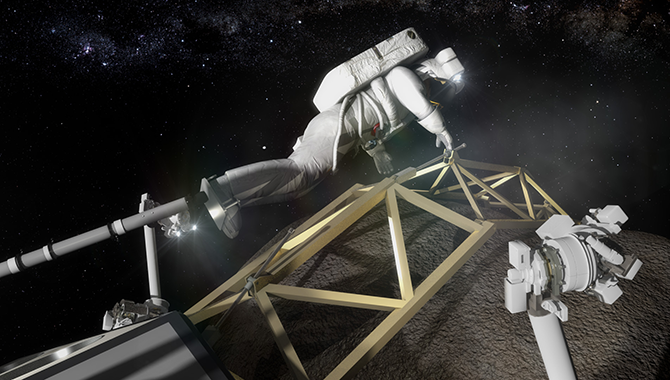
Artist’s concept of an astronaut conducting a spacewalk from Orion to examine the boulder obtained during the Asteroid Redirect Mission.
Image Credit: NASA
NASA’s Asteroid Redirect Mission (ARM) recently identified a boulder as the ideal stepping stone in the journey to Mars.
Robert Lightfoot, NASA associate administrator, announced that the mission concept review for ARM is complete and that the program will capture a boulder from an asteroid to study in cislunar space. The mission will test technologies and maneuvers essential to the advancement of manned deep space exploration.
“The priority from our perspective is a capability demonstration mission. We are trying to demonstrate capabilities that we think we’re going to need in taking humans farther into space and, ultimately, to Mars,” said Lightfoot.
An important aspect of the decision to remove a boulder from a larger asteroid for transit to lunar orbit rather than capturing an entire asteroid is extensibility. “The systems that we bring into play in terms of the capture mechanism, in terms of the way that we’re going to interact with the asteroid…are the kinds of things we know we’re going to need when we go on to another planetary body,” he said.
The ARM team has already identified several viable asteroid candidates. While the final candidate will not be announced until 2019, a primary contender is 2008 EV5. A piece of that asteroid would offer scientific benefits while enabling the mission to develop and demonstrate critical capabilities.
“It is a carbonaceous type C asteroid, which is of particular interest to the scientists because of the volatiles and elements that we know to be in those types of asteroids,” said Lindley Johnson, Near Earth Object (NEO) program executive. Furthermore, he added, “We have a very good idea of its size, its shape, [and] its spin dynamics.”
Following target selection, ARM’s robotic spacecraft is expected to launch in 2020 and encounter the chosen asteroid in 2022. The mission will then spend 215 to 400 days near the asteroid demonstrating a planetary defense technique called the gravity tractor, which is designed to minimize the potential for future asteroid impacts with Earth. After removing the desired boulder, the spacecraft will go into a “halo” orbit around the original asteroid with the goal of shifting its position slightly. “The mass of the spacecraft with the boulder on it will actually influence the gravity and the movement of the bigger asteroid,” said Lightfoot.
Once the gravity tractor technique is verified, the spacecraft will begin moving the boulder into lunar orbit. In 2025, ARM will intersect with two different components of NASA’s manned deep space initiative: the Orion crew capsule and the Space Launch System (SLS). Propelled beyond low Earth orbit (LEO) by the SLS, Orion will ferry astronauts to rendezvous with the asteroid boulder. The two-person crew will spend roughly three weeks conducting extravehicular activities (EVAs) to examine the boulder and obtain samples that they will bring back to Earth.
In addition to capture, transport, and planetary defense capabilities, ARM will highlight other emerging technologies necessary for spaceflight beyond LEO, including new propulsion, sensor, navigation, and docking systems. All of that is part of the extensibility that makes the mission so critical. “ARM is an important part of the overall mission of taking humans farther into space,” Lightfoot confirmed.
Explore the Asteroid Redirect Mission in this concept animation.
Watch a video about the role of Orion and its crew during the Asteroid Redirect Mission.
Learn more about the Asteroid Redirect Mission.






